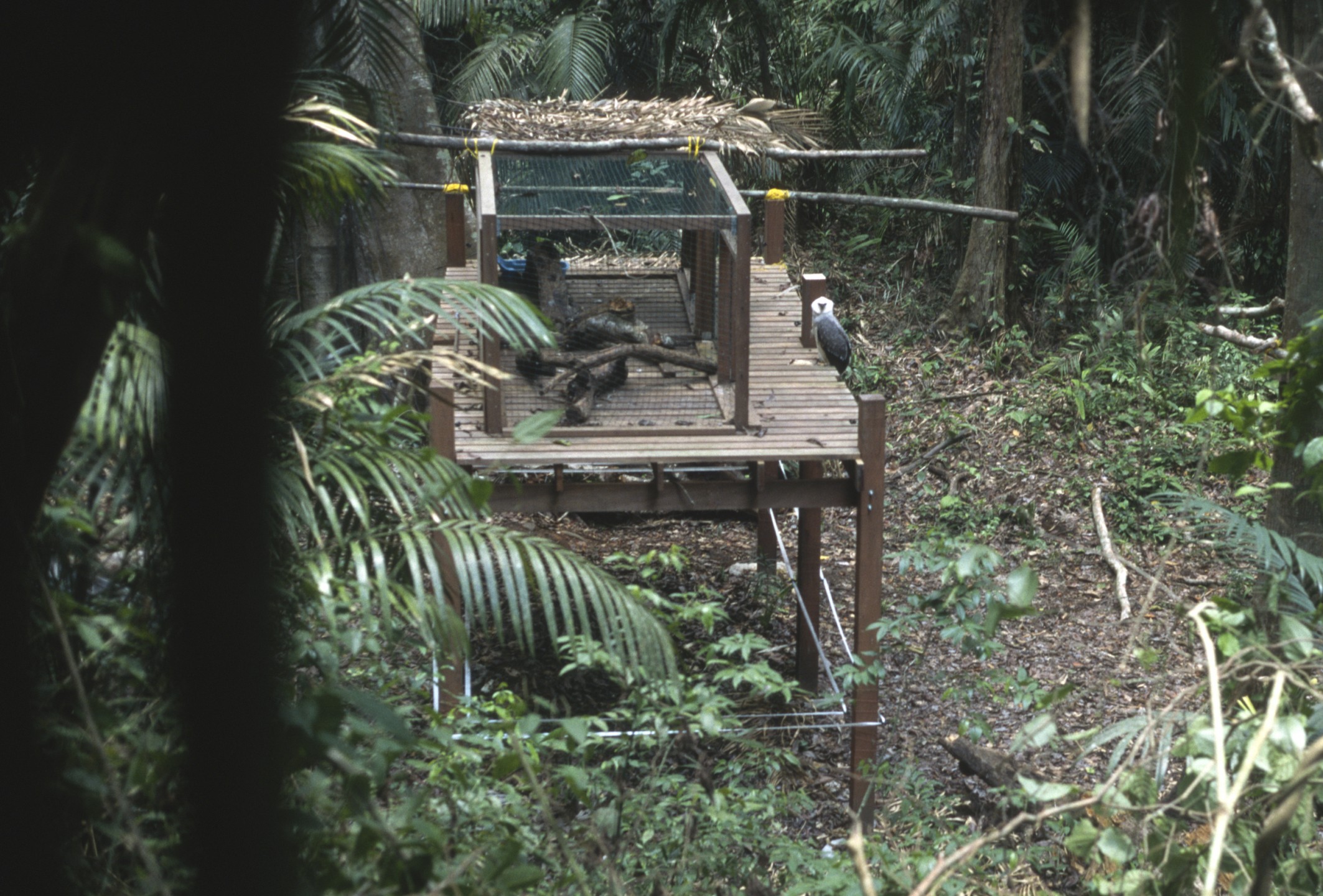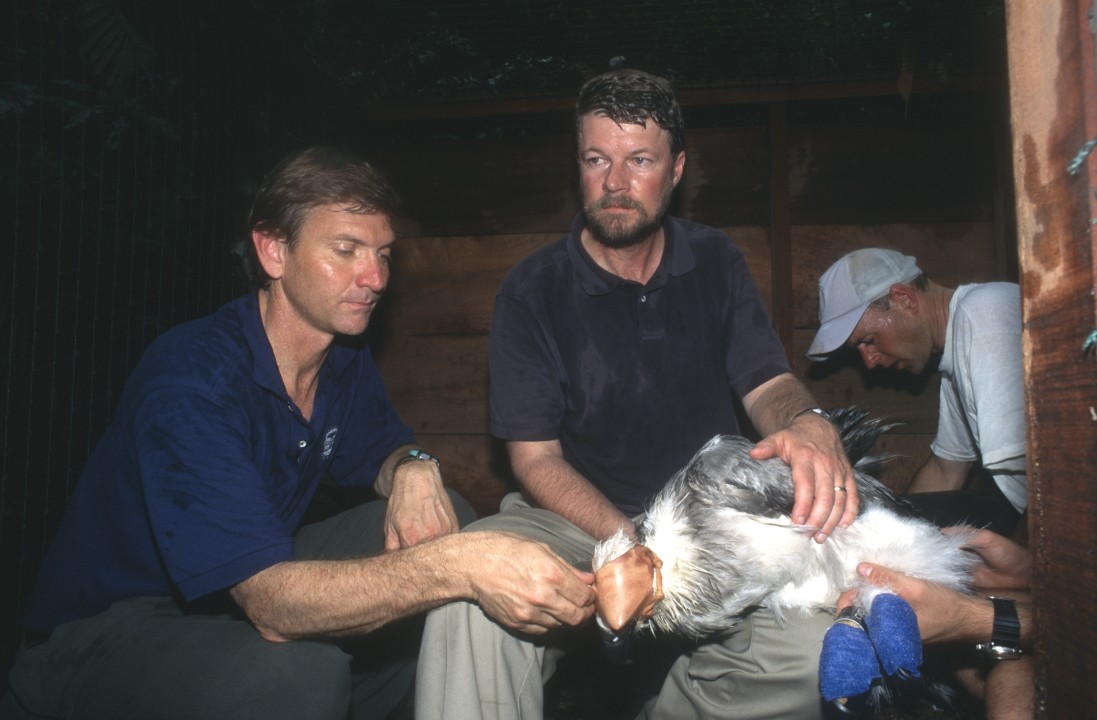Humid Enough for a Harpy
Outside of metropolitan Panama City, Panama is the lush, dense, humid, tropical rain forest of Soberania National Park, habitat for Panama’s national bird, the harpy eagle. In 1998, the national park also welcomed the first harpy eagles ever raised in a zoo and released back to their native home.
In 1994, the San Diego Zoo had been the first facility in North America to successfully hatch and raise a harpy eagle chick. Three more followed, in 1995, 1997, and 1998. The Zoo was working in collaboration with The Peregrine Fund, which also had success hatching harpy eagle chicks at their World Center for Birds of Prey. The ultimate goal was to reintroduce harpy eagles to Panama, where it was recorded that only nine breeding pairs of these magnificent birds were left. In 1998, that goal was realized: a pair hatched at the San Diego Zoo and a pair hatched at the World Center for Birds of Prey traveled to a release site set up in Soberania National Park to acclimate before flying free in their forest home (left). Each of the birds was fitted with a harness holding a radio transmitter, which David Rimlinger, San Diego Zoo curator of birds (above, left), and Bill Heinrich, The Peregrine Fund’s species restoration manager (above, right), helped place on the birds before they were moved to the acclamation site.
Young harpy eagles are usually dependent on their parents for about two years, so biologists lived in the hot and humid tropical forest to monitor and help the birds. They hung food high in the trees and tracked the birds’ activities with the help of radio transmitters. The project was the first of what they hoped would be many such releases, including bringing harpy eagles back to Guatemala and Costa Rica, other former habitats where the species had almost disappeared.

